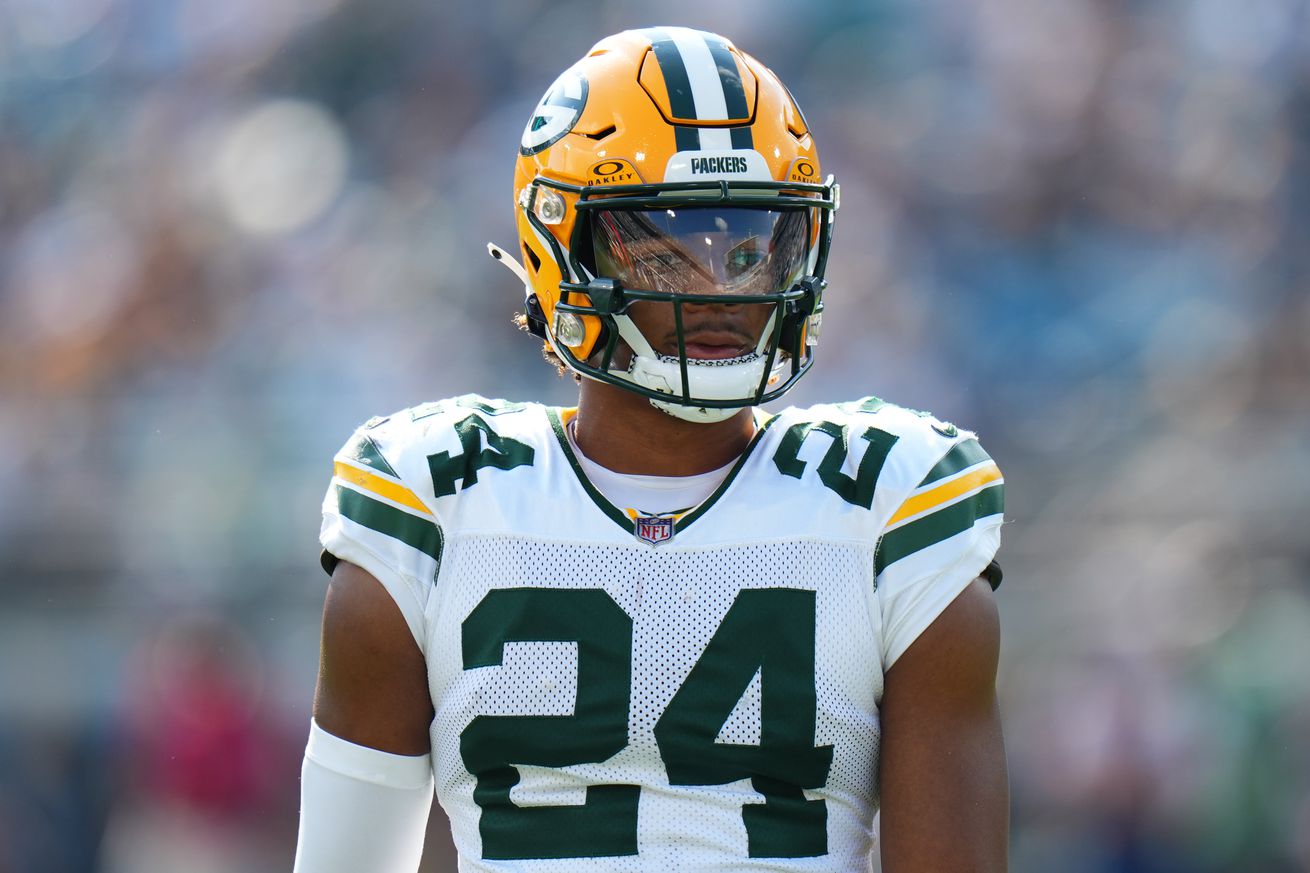
Looking at the Packers’ options, Valentine is the clear choice
The Green Bay Packers’ defense was far from perfect on Sunday when they snuck out with a win against the Chicago Bears by blocking a field goal when time expired. In total, they allowed 391 yards defensively, including 70 on the ground to rookie quarterback Caleb Williams.
One relatively positive development, though, was the play of cornerback Carrington Valentine, who was functionally the every-down player opposite of Keisean Nixon at outside corner for most of the game — as starter Jaire Alexander dropped out with an injury early on versus Chicago. Valentine’s snap numbers have increased drastically over the past three games, going from 12 snaps played versus Jacksonville to 35 versus Detroit and 64 against the Bears. Over the last two games, Valentine has actually played more defensive snaps (99) than the previous eight games combined (94).
So what have we learned about Valentine this month? To answer this, I point you to one of the most stable defensive back metrics we have: Yards allowed per coverage snap played.
Over 99 coverage snaps at the outside cornerback position, as defined by NFL Pro’s player tracking data, Valentine has allowed just 43 yards as the nearest defender to the ball (Pro Football Reference has him giving up 37 yards this year if you want a second source). That’s good for 0.43 yards allowed per coverage snap. How does that rank? Well, among the 87 cornerbacks this season who have played as many snaps as Valentine, the league-wide average is 1.07 yards per play. Out of those 87 cornerbacks, only one has allowed fewer yards per coverage snap than Valentine.
Yes, this means that Valentine is edging out star players like Pat Surtain II, Devon Witherspoon, Marshon Lattimore and Jalen Ramsey, who all also rank in the top 10 in the stat among players with as many snaps as Valentine in 2024. That’s…pretty good and shouldn’t be ignored.
How do the rest of the Packers’ cornerback options fair? Keisean Nixon ranks 49th out of 87 with 1.07 yards allowed per coverage snap and Eric Stokes ranks 65th out of 87 with 1.35. Neither are as bad as the Dallas Cowboys’ Caelen Carson, who has allowed 343 yards (and two touchdowns) on 120 coverage snaps (2.86 yards per coverage snap), but Nixon and Stokes have both been playing below-average football this year.
To put it simply: The data says Nixon is a below-average cornerback but an above-average nickel player. The data says Stokes is a bad cornerback. The data says Valentine looks like a good cornerback.
It would be a tough pill to swallow to put either Nixon or second-round safety Javon Bullard, the two players who have played the nickel spot for the Packers this year, on the bench considering how much they’re invested in those players, but doing so to open up opportunities for Valentine could easily be worth it down the stretch. If Valentine pans out, it saves them a major question mark going into the 2025 offseason, which features a draft class where all three of the non-top-5 projected cornerbacks in the first round are currently battling significant injuries.
Just last week, defensive end Brenton Cox Jr., who played his first real extended NFL performance of his career, lined up for the Packers’ defense nearly as much as former first-round pick Lukas Van Ness, despite the team recently trading away Preston Smith to the Pittsburgh Steelers. That move gives us an indication that Green Bay’s playing time decisions aren’t always primarily motivated by what the front office imagined a player’s talent level to be in the summer. The team was rewarded with a two-tackle for loss, one-sack performance by Cox on Sunday.
The team has shuffled around its depth chart a lot this season, as they try to piece together the best lineup for the young football team. On paper, pushing Valentine into a starting role opposite of Alexander is one of the few ways the team can improve.
